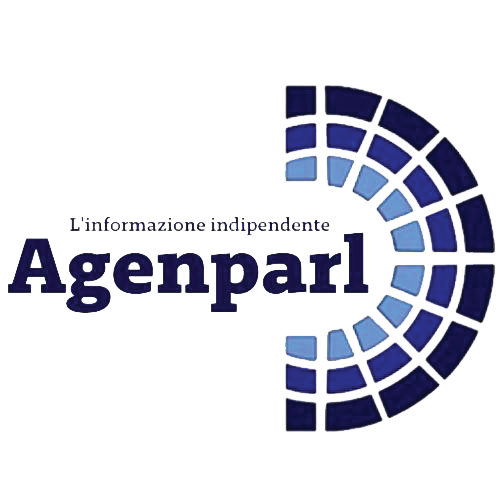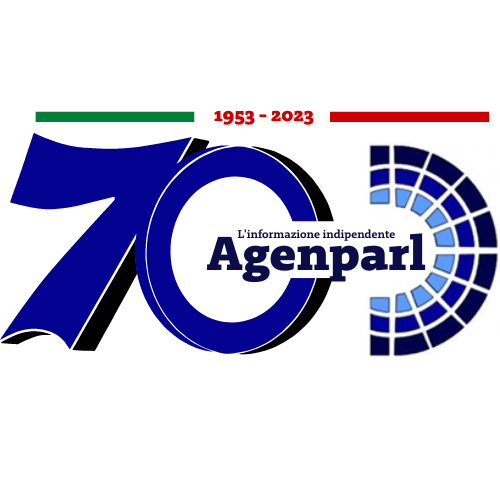 (AGENPARL) - Roma, 21 Giugno 2025
(AGENPARL) - Roma, 21 Giugno 2025(AGENPARL) – Fri 20 June 2025 A weekly compendium of media reports on science and technology achievements
at Lawrence Livermore National Laboratory. Though the Laboratory reviews
items for overall accuracy, the reporting organizations are responsible for
the content in the links below.
LLNL Report, June 20, 2025
Rendering of Firefly’s Elytra spacecraft in lunar orbit providing Ocula
lunar imaging services. (Image: Firefly Aerospace)
High-res moon maps coming soon
https://www.space.com/space-exploration/private-spaceflight/firefly-aerospace-to-launch-ocula-moon-imaging-service-as-early-as-2026
Firefly Aerospace, which successfully operated its Blue Ghost lander on the
lunar surface earlier this year, announced today (June 18) that it’s working
on a new moon project: a “lunar imaging service” called Ocula.
Firefly is developing its Elytra vehicle for a variety of uses in Earth orbit
and deep space, including the region around the moon. The Ocula project will
equip Elytra probes with high-resolution telescopes developed by the Lawrence
Livermore National Laboratory, a U.S. Department of Energy facility in the
California Bay Area.
These scopes will be able to resolve features as small as 8 inches (20
centimeters) on the lunar surface from an altitude of 31 miles (50
kilometers), according to Firefly.
“With ultraviolet and visible spectrum capabilities, the telescopes are
designed to support situational awareness of other objects in cislunar space,
enable fine-grained lunar surface details and identify concentrations of
ilmenite, which indicates the presence of helium-3,” Firefly representatives
wrote in the emailed statement.
Read More
https://www.space.com/space-exploration/private-spaceflight/firefly-aerospace-to-launch-ocula-moon-imaging-service-as-early-as-2026
Target design manager Carolyn Vargas and designer Scott Vonhof review the
design of a 6.72-millimeter-diameter NIF hohlraum.
New design, new record
https://www.independentnews.com/news/livermore_news/livermore-lab-breaks-fusion-record-again/article_926d3f7f-59c4-4eb0-b6fa-33119b5784cd.html
The National Ignition Facility (NIF) at Lawrence Livermore National
Laboratory (LLNL) achieved fusion ignition for the eighth time on April 7,
producing a net-energy gain from a controlled fusion reaction. Using a new
fuel-capsule design, the experiment set records for both energy yield and
target gain, producing 8.6 megajoules (MJ) of energy using 2.08 MJ of laser
energy, or a target gain of 4.13.
The results broke NIF’s own target-gain record, set in February, of 2.44.
Completed in 2009, NIF conducts experiments to support national security, the
nation’s nuclear-weapon stockpile and basic science. The facility, which
spans the size of three football fields, amplifies 192 lasers before they
converge on a target the size of a peppercorn suspended in a small
cylindrical X-ray oven known as a hohlraum. When bathed in X-rays, the target
implodes with enough force to trigger nuclear fusion.
April’s experiment used a target with a redesigned inner layer, known as a
dopant, to improve the target’s compression symmetry during the fusion
process.
Read More
https://www.independentnews.com/news/livermore_news/livermore-lab-breaks-fusion-record-again/article_926d3f7f-59c4-4eb0-b6fa-33119b5784cd.html
LLNL and Amazon Web Services are partnering to leverage the power of AI to
enhance operations at the National Ignition Facility. (Photo: Jason
Laurea/LLNL)
NIF gets a boost
https://www.photonics.com/Articles/Lawrence_Livermore_and_Amazon_Integrate_AI_at_NIF/p5/a71116
When Lawrence Livermore National Laboratory (LLNL)’s National Ignition
Facility (NIF) conducts a high-energy-density physics experiment, a
tremendous amount of high value data is generated in the blink of an eye.
LLNL uses AI data tools to manage this data, using them to improve predictive
modeling capabilities and transform optics inspection.
To boost its AI capabilities, LLNL and Amazon Web Services (AWS) have
partnered to develop an AI-driven troubleshooting and reliability system for
NIF. At NIF, the team recently completed the first phase of integrating
generative AI capabilities into operations.
According to LLNL director Kim Budil, leveraging the lab’s extensive
historical data through advanced AI techniques allows the lab to solve
problems faster and pave the way for predictive maintenance and more
efficient operations in the future.
The initiative is expected to boost operational efficiency at NIF, which
achieved fusion ignition in December 2022. LLNL has repeated ignition seven
times since the milestone achievement, obtaining higher fusion yields in the
process. AI-driven cognitive simulation, a combination of high-performance
computing and machine learning, was a key factor in achieving ignition.
Read More
https://www.photonics.com/Articles/Lawrence_Livermore_and_Amazon_Integrate_AI_at_NIF/p5/a71116
The prototype microwave 3D printing apparatus demonstrated the ability to
cure a wide variety of materials, including both optically translucent and
opaque epoxy resins. (Photo: Blaise Douros/LLNL)
Microwaves make popcorn and plastics
https://www.energy.gov/nnsa/articles/microwaves-not-just-popcorn
Lawrence Livermore National Laboratory (LLNL) researchers have found that
microwaves open a whole new world of 3D printing.
Traditional 3D printing techniques, while amazing, are often time consuming
and limited in the kinds of materials they can use. But a LLNL team, led by
staff scientists Saptarshi Mukherjee and Johanna Schwartz, has pioneered
Microwave Volumetric Additive Manufacturing that allows the use of a wide
range of materials.
The breakthrough involves the resin-heating process. During this phase,
researchers introduced microwaves, which penetrate more deeply into the
material. This allows both opaque and transparent resins to cure and harden
to full strength more quickly. It even works on plastic resins that are
loaded with additives..
Because it is scalable, the technique could allow 3D-printed parts to be made
bigger and more complex in the future. It has potential uses in national
security and industries like aerospace, automotive and healthcare. The
technology can currently print objects up to about 2 inches, but according to
the team could scale up to 36-inch-plus structures in the future.
Read More https://www.energy.gov/nnsa/articles/microwaves-not-just-popcorn
LLNL nuclear engineer Charles Yeamans, center, and co-authors were recognized
with the 2024 Nuclear Fusion Award. From L-R, Zachary Walters, Brent Blue,
Yeamans, G. Elijah Kemp and Heather Whitley. (Photo: Jason Laurea/LLNL)
Recognition for impact
https://www.iaea.org/newscenter/news/us-laboratory-team-leader-wins-iaea-nuclear-fusion-prize-for-2024
A paper on fusion neutron sources by a team from the United States of
America’s Lawrence Livermore National Laboratory and the University of
Rochester has won the IAEA’s annual Nuclear Fusion prize. The article
describes critical successes in producing output from fusion in the form of
neutrons.
The Nuclear Fusion prize is given annually to recognize outstanding work
issued in the IAEA journal, Nuclear Fusion. Each year, a shortlist of ten
papers is nominated. These are papers of the highest scientific standard,
published in the journal volume three years previous to the award year.
Nominations are based on citation record and recommendation by the Board of
Editors. The Board then votes to determine which of these papers has made the
largest scientific impact.
“Shooting really big lasers at stuff can stimulate fusion reactions like
those occurring in the sun and other stars,” said Charles B. Yeamans, the
paper’s first author and winner of the prize.
Read More
https://www.iaea.org/newscenter/news/us-laboratory-team-leader-wins-iaea-nuclear-fusion-prize-for-2024
——————————————————————————
Founded in 1952, Lawrence Livermore National Laboratory https://www.llnl.gov
provides solutions to our nation’s most important national security
challenges through innovative science, engineering and technology. Lawrence
Livermore National Laboratory is managed by Lawrence Livermore National
Security, LLC for the U.S. Department of Energy’s National Nuclear Security
Administration.
Read previous Lab Report articles online https://www.llnl.gov/news/lab-report
Unsubscribe from this newsletter
